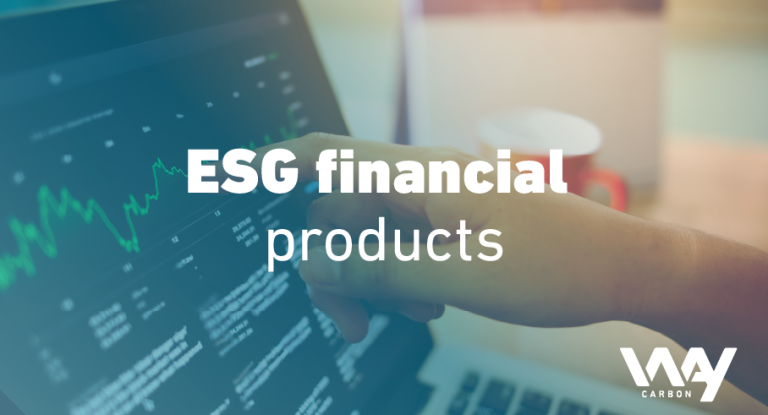How is carried out the study to assess the feasibility of an ESG financial product?

Upon entering the market, every product, service or investment must undergo a financial feasibility study, a necessary process for the enterprise’s safety and success. This process is used to quantify the time and capital necessary to be invested, in order to make it viable for their investors, considering an attractive financial return compatible with the initial investment. As well as the analysis of financial return, based on invested capital, the analysis of ESG (Environmental, Social and Governance) aspects of financial products is presented as an important factor for decision making, given its good financial performance combined with lower volatility and, consequently, risk reduction, making them increasingly attractive to investors¹.
With the acceleration of this trend and the profusion of products that declare themselves sustainable or ESG in recent years, doubts also arise about the information made available regarding the performance and effectiveness of these products in relation to sustainability, mainly due to the difficulty regarding comparability, consistency and interpretation of data by investors².
In this context, the potential of investments focused on sustainability can be measured through benchmarks, in which a return/risk comparison is carried out in a given period with a reference asset. In the Brazilian scenario, these benchmarks are found through the Interbank Deposit Certificate Rates (CDI), Ibovespa index, IMA (ANBIMA Market Index – Brazilian Association of Financial and Capital Market Entities), among others.
Another way of measuring the return/risk of ESG financial assets is through the use of optimization metrics, in order to allow comparisons for a more attractive choice to be inserted in the company’s portfolio. To create metrics, the company needs to recognize the risks of each asset, its short, medium and long-term needs, possible returns and, finally, sustainable impacts. At the same time, there is an expansion of ESG Rating initiatives, similar to what is done by financial risk rating companies. ESG ratings are mainly based on aspects such as climate risks, contributions in line with the Sustainable Development Goals – SDGs, among others.
The characterization through the labeling of financial products in relation to sustainability is also gaining market share. This process follows a series of principles that indicate the allocation of resources to assets with social and/or environmental purposes. This seal is given through reports prepared by specialized companies, which seek to provide transparency to the allocation of resources, as well as the parameters and indicators used in the evaluation.
In this sense, the investor must analyze and verify the proposed operation of products, assets and securities called ESG, Green, Social or Sustainable, and in possession of this information, identify whether the criteria adopted are in line with their financial risk profile and any other purposes and preferences sought with investments. For this, the investor can adopt the following criteria:
- ESG product goals: it is verified which environmental and social characteristics the product aims to promote through its investments.
- ESG management of investments: the criteria adopted for selecting and managing the ESG impacts of investments are evaluated. Resource management processes are also evaluated to ensure these contributions are met.
- Transparency: at this moment, the transparency actions of the asset in relation to their stakeholders are verified. It is analyzed whether the asset has a robust process and commitments to communicate resource allocation and the environmental and social characteristics of investments.
However, this market has not yet passed through a regulation, and thus there is a great variation between the types of information used, such as the analysis methodology, data transparency, among other aspects. Until the beginning of 2022, all investment funds could be called with names such as “ESG”, “green”, “socio-environmental” or “sustainable” according to the will of the manager or investment platform, as there were no rules from the Securities and Exchange Commission (CVM) or the Brazilian Association of Financial and Capital Market Entities (Anbima) with minimum requirements to be met.
Anbima, which brings together capital market participants, concluded earlier this year a classification of sustainable investment products through self-regulation. Although it is not a regulatory rule, adherence to the rules is mandatory for all fund managers associated with Anbima. The objective is for investment funds to detail and formalize their sustainable investment strategies and ESG integration in public documents, presented with due transparency to the investor.
Thus, it is not enough for the financial product itself to be sustainable – the manager or responsible institution will also have governance and decision structures to ensure the application of ESG factors, including formalization of the used strategy, metrics to evaluate them and possible limitations, making all these aspects transparent publicly on its website.
In line with Anbima, the CVM has been seeking to define which credit funds can carry an ESG label, moving towards the creation of rules for investment products to carry such a seal³. According to CVM Resolution 80/224, companies listed on the stock exchange must report material environmental and social information in their reference forms, which may constitute a risk factor for their business. In addition, the standard also provides for informing whether the asset has a socio-environmental policy and whether information of this nature is disclosed, its methodology and whether such data are reviewed by an independent entity.
Investment opportunities linked to environmental and/or social objectives, through financial instruments, corroborate the trend towards greater transparency on the performance and impacts of companies on sustainability issues. On the other hand, as there is no standard on the accountability of ESG aspects and standards, there is space for variety and subjectivity when evaluating companies which are supposedly sensitive to the theme. For these reasons, regulatory bodies are looking for ways to regulate, which are still in the maturation process.
BIBLIOGRAPHIC REFERENCES
¹ B3 divulga a 16ª carteira do ISE B3
² Série CVM Sustentável: volume 3
³ CVM passa a exigir informações ESG de companhias listadas
 EN
EN  ES
ES PT
PT






